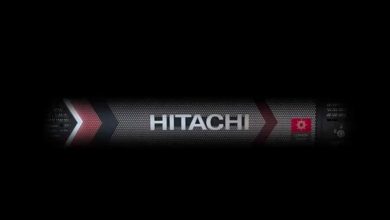
Nowadays, everyone needs fast connectivity in all aspects of their lives, from business and education to entertainment and leisure. But have you taken a closer look at how the network cables play an integral role – almost akin to the pulsing veins that supply blood in the human body – in making it all possible?
Due to technological advancements and increased demand for higher networking speeds, cable and components have been developed that can transmit faster rates over longer distances. Numerous copper classes and categories have been created over the years in order to precisely address network parameters and reliably deliver data where it needs to go.
There are many reasons why copper cables are still being used to this day, even though they are less visible than ever, often kept hidden in today’s era where users prefer a more wireless experience.

Nevertheless, installation tools have never been more affordable and installation processes, simpler, making copper cables the de facto choice for the bulk of horizontal LAN deployments. Not to mention, as emerging IoT technology adds even more devices to the network, further developments will keep copper cabling relevant.
Future-Proofing Your Connections with Cat6A
The first Category 6A (Cat6A) cabling systems were introduced in 2004. It was ahead of its time, and even then it was apparent that it was purposefully constructed to be as ‘future-proof’ as possible. Its viability as the infrastructure for a new generation of applications and use-cases was aided by the fact that it enabled PoE (Power over Ethernet).
Because devices can be located anywhere within reach of a PoE switch rather than an AC outlet, Cat6A not only supports 10Gbps speeds but also greatly expands device manufacturer’s ability to deliver higher power and bandwidth anywhere, within a maximum cable length of 100 metres.
Today, Category 6 (Cat6) cables and connectors continue to lead the market. And this is due to several reasons. For one, it is simple to install due to its smaller outer diameter (OD). It is also less expensive due to its materials and, well, people didn’t really have a need for 10 Gig speeds, until now!
As more systems converge and require higher speeds, as more users go wireless, and as more devices are powered via PoE, organisations that do not choose Cat6A may find themselves having to replace Cat5e and Cat6 sooner rather than later. In the long term, this will be more expensive. Even better, the growing adoption of Cat6A will only help to drive down its cost.

The following are more reasons why you should utilise Cat6A as your cabling standard:
- Cat6A offers simple and cost-effective provisioning to support current and emerging applications.
- Cat6A supports Wi-Fi technologies already exceeding 1 Gbps.
- 10GBASE-T provides improved price-performance and lower power consumption.
- Cat6A supports new in-building wireless systems that rely on 10G technology.
- Cat6A supports 10GBASE-T to 100 metres.
How CommScope Revolutionises the Cat6A
Enterprise network transformations are both empowering and destructive. CommScope has helped enterprise networks of all sizes adapt and grow, so you can count on them to keep you ahead of the curve.
Under the SYSTIMAX brand, CommScope pioneered the development of Category 6A and continues to lead in applications for HD, A/V, Wi-Fi 6 & 6E, PoE, IB cellular, IoT, and much more.
This complete Cat6A solution of cables, patch cords, connectors, outlets, and panels provides customers with the performance and innovation they’ve come to expect from CommScope, from incredibly fast network speeds to incredibly fast installation speeds of the pre-terminated solution to network vision and control.
They also provide superior channel performance, including enhanced cable and connector performance to handle the newest 10 GbE specifications and best-in-class insertion loss and crosstalk performance inside and among channels.
Click here to learn more about how you can evolve and meet today’s network demands.





